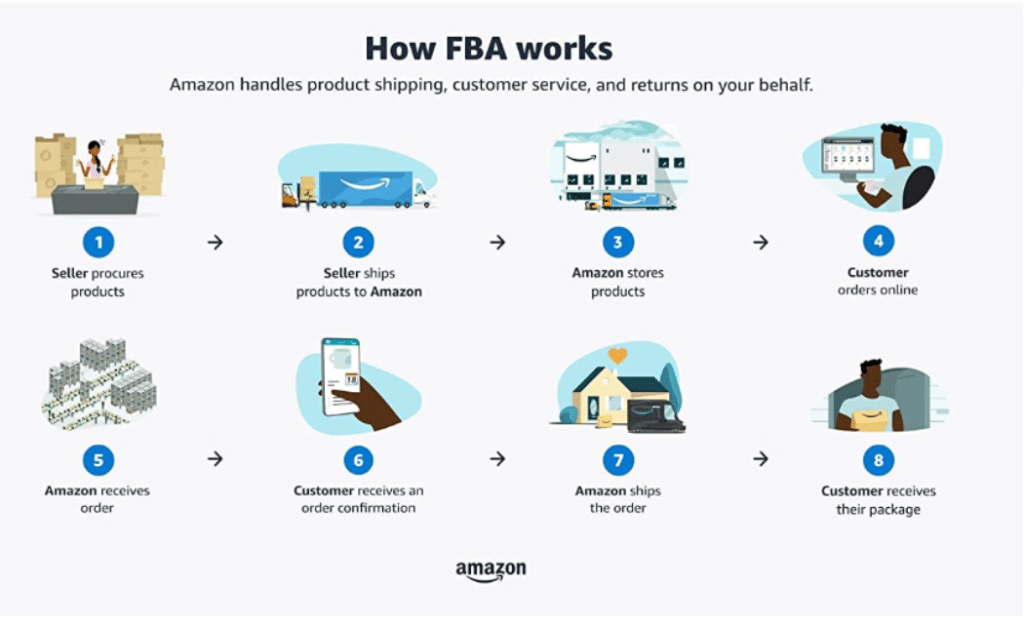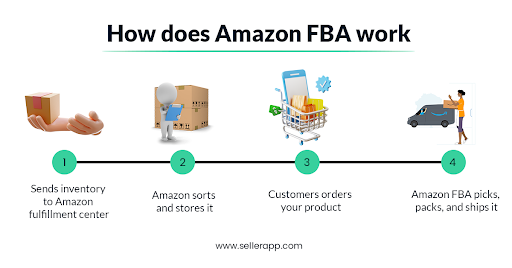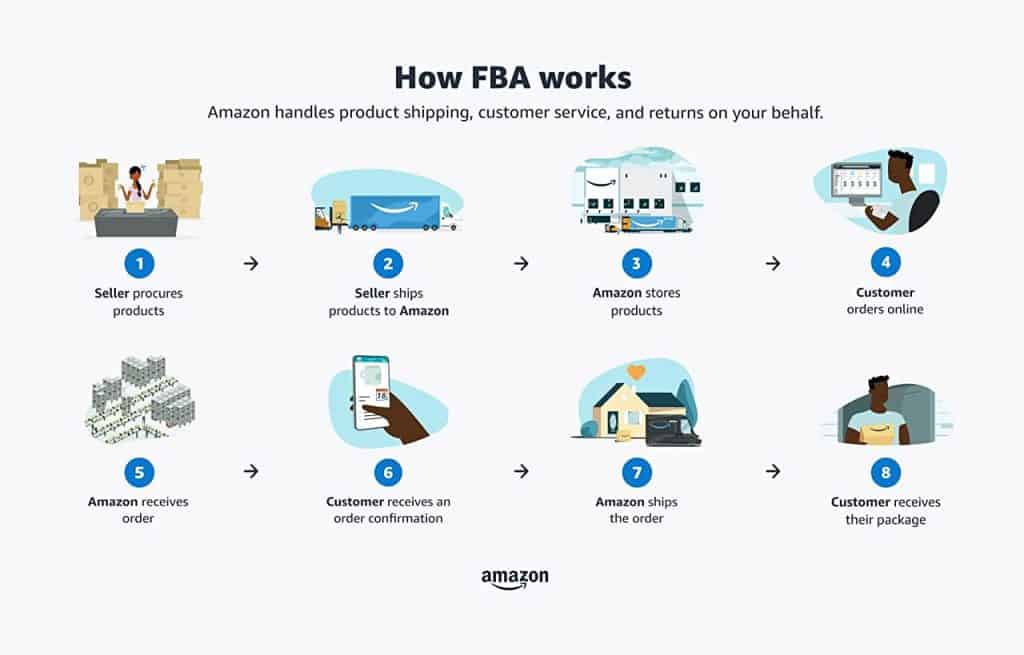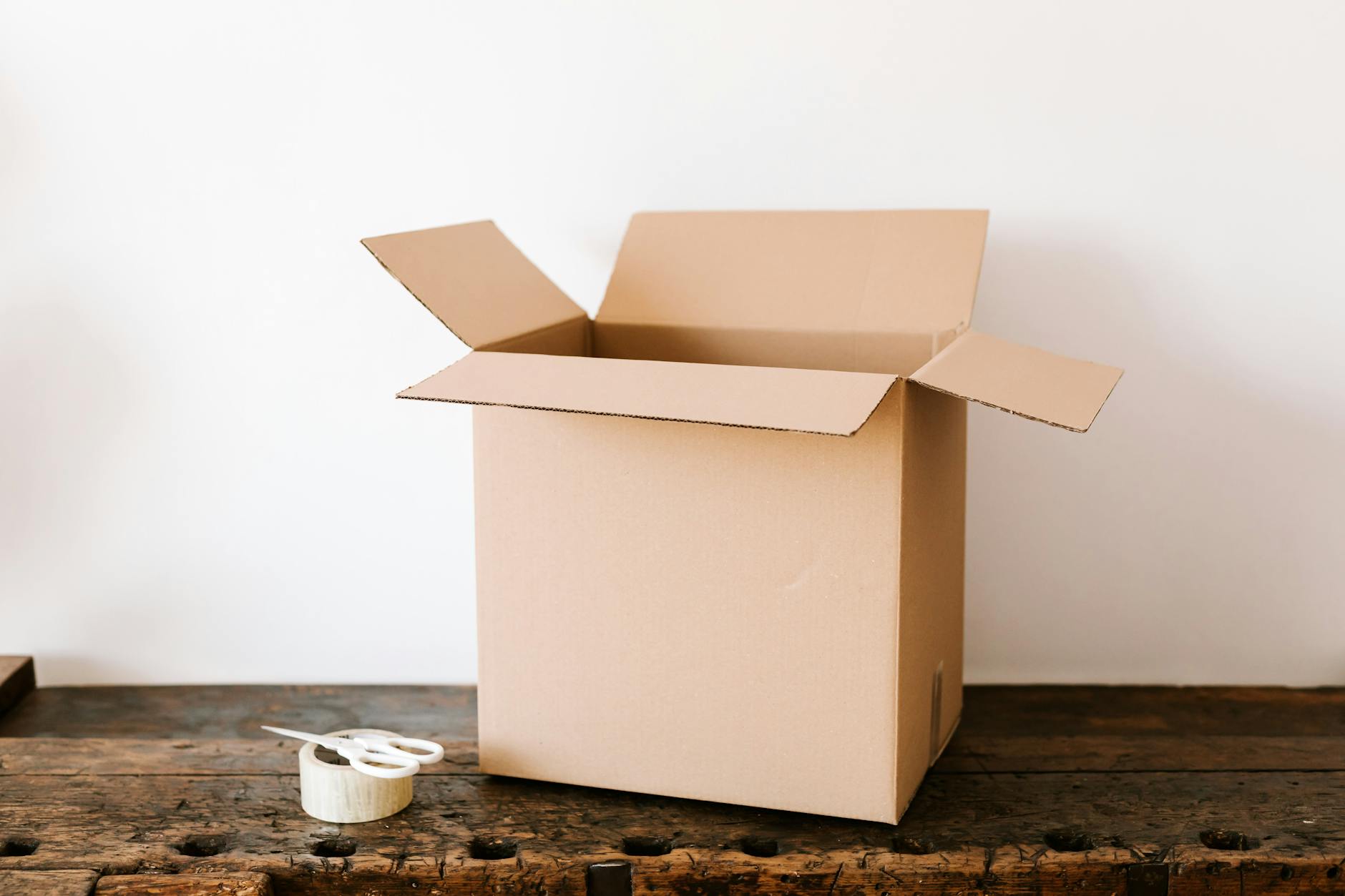Curious about starting your own e-commerce business? Learn the Amazon FBA basics and start selling today to make passive income!
Table of Contents
- Introduction to Amazon FBA
- The Benefits of Using Amazon FBA
- Getting Started with Amazon FBA
- Preparing Your Goods for Amazon FBA
- Packaging Guidelines for Amazon FBA
- Learning from Others: Amazon FBA Communities
- Scaling Your Amazon FBA Business
- Common Mistakes to Avoid
- Conclusion
- Frequently Asked Questions (FAQs)
Introduction to Amazon FBA
In today’s digital age, selling products online has become a popular way for individuals and businesses to reach a broader audience. One of the key platforms that has revolutionized the e-commerce landscape is Amazon. And when it comes to selling on Amazon, one term that you may have come across is FBA. So, what exactly is Amazon FBA, and why is it such a popular choice? Let’s dive into the basics.
What Does FBA Stand For?
First things first, let’s break down the acronym FBA. FBA stands for Fulfillment by Amazon. Essentially, it means that Amazon takes care of the entire fulfillment process for sellers. From storing your products in their warehouses to packing, shipping, and providing customer service, Amazon handles it all on your behalf.
How Amazon FBA Works
Here’s a simple breakdown of how Amazon FBA works. As a seller, you send your products to Amazon’s fulfillment centers. Once your items are received, Amazon stores them in their warehouses. When a customer places an order for your product, Amazon picks, packs, and ships the item directly to the customer. They also handle any customer inquiries or returns, giving you more time to focus on growing your business.
The Benefits of Using Amazon FBA
One of the key benefits of using Amazon FBA is the lightning-fast shipping it offers. When you send your products to Amazon’s fulfillment centers, they take care of the storage, packing, and shipping processes for you. This means that once a customer places an order, Amazon can ship it out quickly, ensuring prompt delivery to the buyer’s doorstep.
Customer Service
Another advantage of Amazon FBA is the customer service support that comes with it. Amazon handles customer inquiries, returns, and refunds on behalf of FBA sellers. This allows you to focus on growing your business without having to worry about managing customer issues. Amazon’s robust customer service system ensures a positive buying experience for your customers, which can lead to repeat business and positive reviews.
Understanding Amazon FBA Fees
Types of FBA Fees
When you decide to use Amazon FBA to sell your products, there are various fees you need to consider. These fees include storage fees, fulfillment fees, and referral fees. Storage fees are charged for keeping your products in Amazon’s fulfillment centers, while fulfillment fees cover the cost of picking, packing, and shipping your items. Referral fees are a percentage of each sale that Amazon takes as a commission.
Calculating Your Fees
It’s essential to have a clear understanding of how these fees are calculated so that you can plan your budget effectively. Amazon offers fee calculators that allow you to input details about your products, such as their size and weight, to estimate the fees you will incur. By using these tools, you can get a better idea of how much it will cost to use Amazon FBA for your business.
Getting Started with Amazon FBA
In order to start selling with Amazon FBA, you first need to create an Amazon Seller Account. This account will allow you to list your products on the platform and begin utilizing Amazon’s fulfillment services.

Image courtesy of www.yaguara.co via Google Images
Creating an Amazon Seller Account
The first step is to go to the Amazon Seller Central website and sign up for an account. You will need to provide some basic information about yourself and your business, including your contact details and payment information.
Once your account is set up, you can start listing your products for sale on Amazon. Make sure to provide accurate and detailed descriptions of your items to attract potential buyers.
Listing Your Products
When listing your products, you will need to include key information such as the item’s title, description, price, and images. It’s important to optimize your listings with relevant keywords to improve your product’s visibility on the platform.
By following these simple steps, you can begin your journey as an Amazon FBA seller and start reaching customers around the world.
Preparing Your Goods for Amazon FBA
When you decide to sell your products using Amazon FBA, it’s crucial to ensure that your items are prepared correctly before sending them to Amazon’s fulfillment centers. This section will guide you through the process of getting your goods ready for FBA, covering product labeling and choosing the right printer for your needs.
Product Labeling
Before you can ship your products to Amazon, you’ll need to label them appropriately. Amazon requires that each item has a unique barcode to track and manage inventory effectively. The label size should be 2 inches by 1 inch (5 cm by 2.5 cm) for standard products and 0.75 inches by 0.5 inches (1.9 cm by 1.3 cm) for small products. Make sure to place the label in a visible and easily scannable location on your product packaging.
Choosing the Right Printer
Having the right printer for generating Amazon FBA labels is essential for smooth and efficient operations. A thermal printer is highly recommended for producing clear, durable, and smudge-free labels. When selecting a thermal printer, consider factors such as print speed, label size compatibility, and connectivity options. Some popular options for thermal printers suitable for Amazon FBA include Dymo LabelWriter 4XL, Rollo Label Printer, and Zebra GK420d.
Packaging Guidelines for Amazon FBA
When it comes to selling products through Amazon FBA, proper packaging is key to ensuring that your items reach customers safely and in good condition. In this section, we will cover Amazon’s packaging requirements and provide some helpful tips for preparing your goods for shipment.

Image courtesy of www.sellerapp.com via Google Images
Amazon’s Packaging Rules
Amazon has specific guidelines that sellers must adhere to when packaging their products for shipment. These rules are designed to protect items during transit and ensure a positive customer experience. Some key packaging requirements include:
- Use sturdy, corrugated boxes that can support the weight of your products.
- Avoid using damaged or previously used boxes, as they may not provide adequate protection.
- Use bubble wrap or other protective materials to cushion items and prevent damage.
- Seal boxes securely with strong packaging tape to prevent them from opening during shipping.
- Affix proper labels, including the Amazon FBA labels, to each box for easy identification.
Packing Tips
Aside from following Amazon’s packaging requirements, there are some additional tips that can help you pack your products securely and efficiently:
- Wrap fragile items in bubble wrap or other protective materials to prevent breakage.
- Fill any empty spaces in boxes with packing material to prevent items from shifting during transit.
- Label each box clearly with the contents inside to make it easier for Amazon’s fulfillment centers to process your inventory.
- Consider using a thermal printer to print your Amazon FBA labels quickly and accurately.
By carefully following Amazon’s packaging guidelines and implementing these packing tips, you can ensure that your products are well-protected and ready for shipment to customers. Remember, proper packaging is not only crucial for the safe delivery of your items but also plays a significant role in customer satisfaction and building a successful Amazon FBA business.
Learning from Others: Amazon FBA Communities
When starting your Amazon FBA journey, it’s essential to learn from those who have already taken the plunge into the world of online selling. One valuable resource that can provide guidance, tips, and support is joining Amazon FBA communities. These online forums can be a goldmine of information for new sellers looking to navigate the complexities of selling on Amazon.
| Topic | Description |
|---|---|
| What is Amazon FBA? | Amazon FBA (Fulfillment by Amazon) is a service provided by Amazon that allows sellers to store their products in Amazon’s fulfillment centers. Amazon then picks, packs, ships, and provides customer service for these products. |
| Benefits of using Amazon FBA | – Prime eligibility for products – Increased visibility and trust from customers – Time-saving with fulfillment and customer service handled by Amazon – Access to Amazon’s global customer base |
| Getting started with Amazon FBA | 1. Create an Amazon Seller account 2. Choose products to sell and prepare them for shipping 3. Create product listings on Amazon 4. Choose FBA as your shipping option 5. Send your products to Amazon’s fulfillment centers 6. Start selling and let Amazon handle the rest |
| Tips for success with Amazon FBA | – Research market trends and competition – Optimize product listings with keywords and high-quality images – Monitor and manage inventory levels to avoid stockouts – Provide excellent customer service to build a positive reputation |
The Role of Online Forums
Online forums like Reddit offer a platform for Amazon FBA sellers to share their experiences, ask questions, and offer advice to one another. By participating in these communities, you can gain insights into best practices, learn about the latest trends in the industry, and stay updated on any changes or updates from Amazon itself. Whether you have questions about product sourcing, shipping issues, or marketing strategies, there’s likely a wealth of knowledge waiting for you in these online forums.
Finding a Support System
Starting a new business can be daunting, but with the support of a community of like-minded individuals, you don’t have to go at it alone. Amazon FBA communities can serve as a support system for new sellers, offering encouragement, motivation, and answers to your burning questions. Whether you’re feeling stuck on a particular issue or simply want to celebrate a milestone, having a group of peers to turn to can make all the difference in your Amazon FBA journey.
Scaling Your Amazon FBA Business
Once you’ve established your Amazon FBA business and gained some traction, you may be looking to take your venture to the next level. Here are some tips to help you scale up and grow your business for increased success.

Image courtesy of www.brandbuilderuni.com via Google Images
Increasing Product Lines
One effective way to scale your Amazon FBA business is by expanding your product offerings. By introducing new products or variations of existing ones, you can attract a broader range of customers and increase your sales potential. Conduct market research to identify popular products in your niche and consider adding them to your inventory to diversify your offerings.
Optimizing for Better Visibility
Another crucial aspect of scaling your Amazon FBA business is optimizing your product listings for better visibility. Utilize relevant keywords in your product titles and descriptions to improve search visibility and attract more customers. High-quality images and compelling product descriptions can also enhance the appeal of your products, leading to higher conversion rates and increased sales.
Common Mistakes to Avoid
As you start your journey as an Amazon FBA seller, it’s crucial to steer clear of common mistakes that could hinder your success. Here are some pitfalls to avoid:
Pricing Errors
One of the biggest mistakes new sellers make is setting the wrong price for their products. Pricing too high can drive potential customers away, while pricing too low may not cover your costs or even lead to losses. It’s essential to research competitors’ prices, factor in all costs, and set a competitive price that attracts buyers while ensuring profitability.
Inventory Mismanagement
Another frequent mistake is not keeping track of inventory properly. Running out of stock on popular items can lead to missed sales opportunities, while overstocking can tie up your capital and warehouse space. Implement inventory management tools to track sales velocity, forecast demand, and reorder products in a timely manner to maintain a balanced inventory level.
Conclusion
In this article, we have explored the fundamental aspects of starting and running an Amazon FBA business. From understanding what Amazon FBA stands for to delving into the importance of packaging guidelines and community support, we covered a wide range of topics essential for success in the e-commerce world.

Image courtesy of www.sino-shipping.com via Google Images
By utilizing Amazon FBA, sellers can benefit from faster shipping, streamlined customer service, and access to a vast online marketplace. Calculating and managing fees, preparing goods for shipment, and avoiding common mistakes are key factors in ensuring a smooth operation and maximizing profitability.
For those looking to grow their Amazon FBA business, increasing product lines and optimizing for better visibility can help expand reach and increase sales. Engaging with online communities like Reddit can provide valuable insights and a supportive network for new sellers navigating the world of e-commerce.
Remember, starting an Amazon FBA business requires careful planning, attention to detail, and a willingness to learn from others. By following best practices, avoiding common pitfalls, and staying informed, sellers can pave the way for a successful venture in the competitive online marketplace.
Frequently Asked Questions (FAQs)
What is Amazon FBA?
FBA stands for Fulfillment by Amazon. This means that when you sell products using Amazon FBA, Amazon takes care of storing your items in their warehouses, packing them up, and shipping them out to customers when they make a purchase. It’s a convenient way to sell products online without having to worry about handling the logistics yourself.
How much does Amazon FBA cost?
Amazon FBA fees can vary depending on the size and weight of your products, storage duration, and other factors. There are different types of fees, including storage fees, fulfillment fees, and referral fees. It’s important to calculate these fees before starting to sell on Amazon FBA so you can budget accordingly.
Do I need a special printer for Amazon FBA labels?
Yes, it’s recommended to use a thermal printer for printing Amazon FBA labels. Thermal printers produce high-quality labels that are easy to read and scan, which is important for efficient processing at Amazon’s fulfillment centers. Investing in a good thermal printer can help streamline your labeling process and reduce errors.
Can I sell anything on Amazon FBA?
While Amazon FBA offers a wide range of categories for selling products, there are restrictions on certain items like hazardous materials, perishable goods, and adult products. Before listing your products on Amazon FBA, make sure to check Amazon’s guidelines to ensure your items are eligible for fulfillment through their service.
How can I increase sales on Amazon FBA?
To boost sales on Amazon FBA, you can consider expanding your product offerings to attract more customers. Additionally, optimizing your product listings with high-quality images, detailed descriptions, and competitive pricing can help improve visibility and attract more buyers. It’s also beneficial to utilize Amazon advertising tools to reach a larger audience and drive traffic to your listings.
